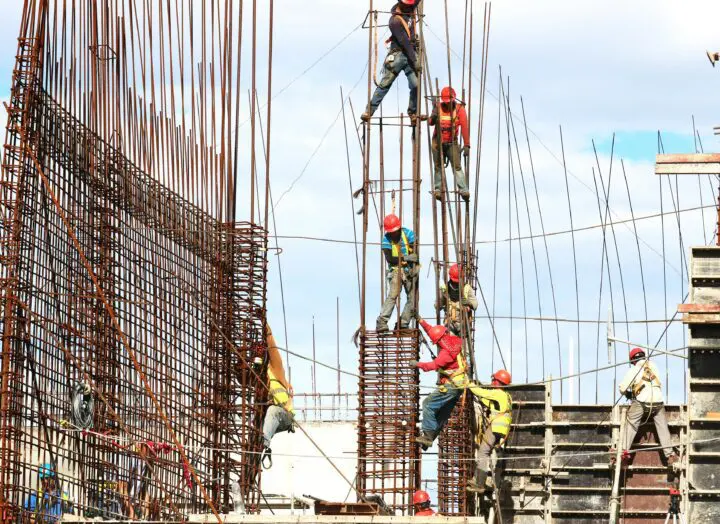AIA Climate Impact Survey
The rapidly changing climate is on everyone’s mind, whether the impact is felt with immediacy as severe weather in one’s own locality or the unease experienced from recent climate reports and increasing events that impact every place across the globe.
Text
The rapidly changing climate is on everyone’s mind, whether the impact is felt with immediacy as severe weather in one’s own locality or the unease experienced from recent climate reports and increasing events that impact every place across the globe. The message for architects is becoming clearer every day – that the profession has a responsibility to design for future climate challenges and may even be held liable if we fail to consider these risks.
Client expectations are changing as they anticipate that design professionals should incorporate future climate hazards and adaptation solutions into projects. Professional liability insurance is among the strongest leverage for architects to incorporate climate action into their work. The Scalable Climate Action “Group” (SCA) of the AIA Strategic Council developed a recent AIA Trust newsletter article and survey, Climate Impact on Professional Liability, which outlined resources to help architects understand the risks and responsibilities related to climate change, and linked architects to a survey on Climate Impact on Practice.
A cross-section of architects responded to the survey, with representation from different age groups, geographic locations, and firms, with 48 percent of respondents from small firms (1 – 10 people), representative of the distribution of firm size across the country. The geographic distribution was similarly varied, with 58 percent from the Midwest, South, and Southeast and the remainder from the Northwest, Southwest, and Northeast.
Nearly half of the architects surveyed (48%) were aware of the potential liability of architects if they fail to design for climate change. The IPCC Sixth Assessment Report warns that human-induced climate change affects the lives of billions of people around the world, despite efforts to reduce the risks. This global consensus makes the impacts of climate change – increases in precipitation, flooding, sea level rise, drought, and temperature – more foreseeable, and makes architects more liable if they ignore the risks associated with these impacts.

Melting glacier due to climate change in Patagonia Argentina
Over half of the respondents (52%) have considered future climate projections in their projects, factoring in solutions to extreme weather. Those architects who have not yet adopted this approach had questions about where to find reliable information at a scale that is useful at the project scale. Two primary information sources are:
- U.S. Climate Resilience Toolkit (https://toolkit.climate.gov/#regions ) which provides regional information on hazards, exposure, vulnerability, and risk; and
- ASCE 7 Hazard Tool (https://asce7hazardtool.online/) a quick way to search for key design parameters for projects based on the location and risk category which links viewers to FIRM maps and other resources.
Some architects who have not yet integrated climate projections into their work may have a practice such as interiors where climate data seems less relevant, even though occupant comfort or business continuity may be critical design factors. Others believe that designing to code requirements is sufficient, although current codes and regulations may lag behind the speed and severity of accelerating climate hazards. Until authorities develop new rules, architects must take the lead in addressing climate challenges.
It is reassuring that over half of the architects surveyed (54%) have discussed the importance of hazard and climate risks with their clients. An increasing number of clients are asking how the designs address future climate adaptability.
Clients may elect not to pursue climate change adaptation solutions for multiple reasons – budget, unfamiliarity with the proposed materials or systems, or because the potential impacts seem distant. If this is the case, the architect can limit their professional liability by using the AIA Hazard and Climate Risk Acknowledgement Form to document the client’s approach to risk. A total of 64% of the survey respondents indicated an interest in using this tool to limit their professional liability. Other options outlined in the AIA Trust webinar, Taking the Lead to Address Climate Change, include scrutinizing contract language, declining work if necessary, and carrying good professional liability insurance.
Architects have a duty of care to our clients to protect them from harm and climate change has already been observed in many places and is foreseeable in others. Is the project in a location where it is in the realm of probability that it will be exposed to hazards over its service life? Are solutions available to address the vulnerabilities? What scientific findings are available? As the profession of architecture becomes more aware of climate issues, ignoring these questions may place individual architects in a position that is tough to defend if hazard damage occurs.
There are precautions so imperative that disregarding them will not excuse their omission. The AIA believes that climate action is imperative to protect our planet and preserve life, and architects play an important role in developing solutions to the crisis.
We can’t unknow this.
Submitted by Allison Anderson, FAIA, LEED-AP, member of the AIA Committee on Climate Action and Design Excellence (CCADE), and Megan Recher, AIA, member of the AIA Resilience and Adaptation Advisory Group.
More on Climate Change & Professional Liability

Professional Liability Insurance Database
Professional Liability
Is Your Firm Eligible for a Premium Credit?
News ▪ January 2009
Straightforward Advice on Preserving Cash Flow
Professional Liability ▪ Retirement & Financial Planning ▪ Article